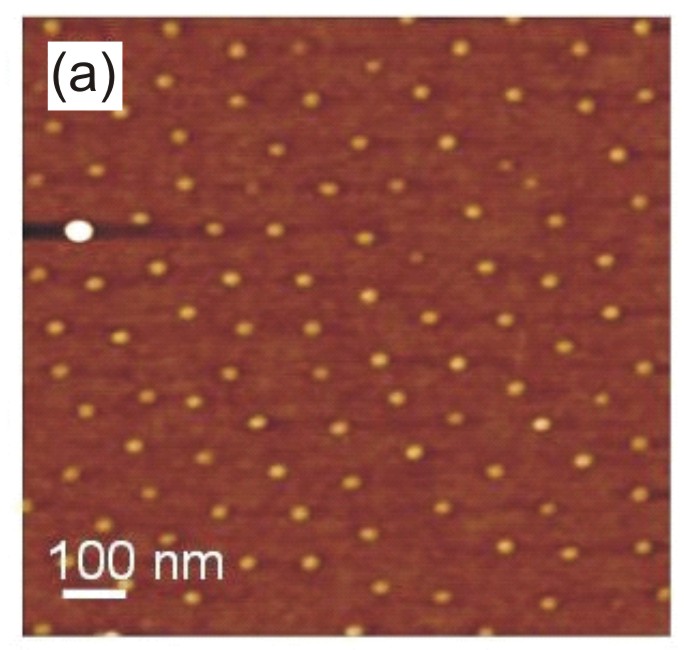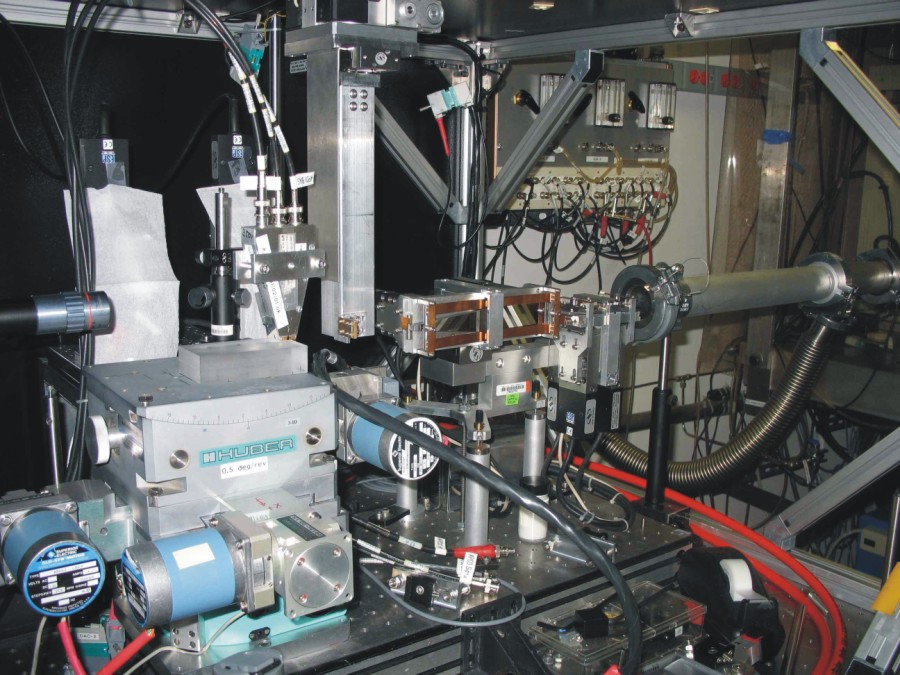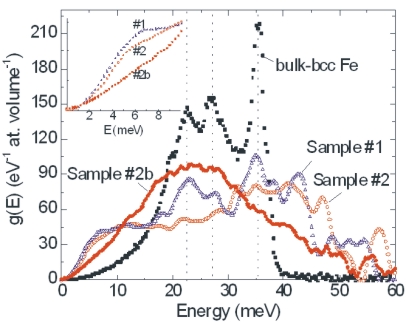|
|
Research
Our group investigates structural, electronic, magnetic, vibrational, and
chemical properties of size- and shape-selected nanostructures. These fundamental physical properties are of great importance
to many applications of nanotechnology, including giant magnetoresistance spin valves, magnetic tunnel
junctions, single electron transistors, molecular electronic devices, thermoelectric devices, and catalytic
systems for energy generation and environmental remediation.
Emphasis is given to: (i) synthesizing metallic
nanostructures with well defined geometries, (ii) understanding the mechanisms underlying the enhanced chemical
reactivity of metal nanoclusters, (iii) monitoring size- and composition-dependent changes in the electronic
structure and vibrational dynamics of nanoscale systems, (iv) investigating the magnetic properties of nearly
1D and 0D systems, (v) exploring chemically- and thermally-induced changes in the mobility and morphology
of nanostructures.
 Sample undergoing heat treatment in the analysis chamber
Sample undergoing heat treatment in the analysis chamber
1) Catalytic properties of size-selected metal nanoclusters
Despite more than a decade of intense research on nanoparticle
catalysis, fundamental knowledge of key features that influence the catalyst activity and selectivity of a chemical reaction is still
lacking. This project aims to improve the understanding of the processes taking place in nanocluster-catalyzed reactions by systematically
studying how the nanoparticle size, shape and composition affect its chemical reactivity.
We use the low temperature carbon
monoxide oxidation and the direct propylene epoxidation reactions on metal-oxide-supported gold nanoparticles as a model system.
To create
ordered arrays of size- and shape-selected nanospheres, nanorods, and triangular nanoprism
catalysts we use different ex-situ wet chemistry methods such as nanosphere
lithography and the self-assembly of metal loaded block-copolymer
micelles. In addition, in-situ nanoparticle shape modifications by pulsed laser irradiation are being conducted.

AFM images of gold nanoparticles supported on SiO2/Si(111)
taken after an O2-plasma treatment
Interconnections between directly measurable electronic phenomena and surface chemistry are being used to provide insight into catalytic reactions.
Temperature-Programmed Desorption (TPD), Scanning Tunneling Microscopy (STM), X-ray Photoelectron Spectroscopy (XPS) and Ultraviolet
Photoelectron Spectroscopy (UPS) are being employed to characterize the changes induced in the metal
nanoclusters and their supports upon gas exposure and ultraviolet monochromatic light irradiation.
The proposed research may lead to the discovery of new catalytic processes
while making efficient use of energy and raw materials with minimal influence on the environment.
2) Atomic vibrations in metal nanoclusters
A profound knowledge of the atomic vibrational properties of
nanostructured materials is of great fundamental and technological importance since the vibrational properties, in particular the
vibrational density of states, VDOS, are the key to an understanding of thermodynamic properties like heat capacity, vibrational
entropy, mean sound velocity, Debye temperature, and thermal conductivity, as well as electron-phonon coupling and 1/f noise of electronic
devices. Moreover, phonon-assisted chemical reactions might play an important role in some catalytic properties of nanoclusters.
Our group regularly visits the
Advanced Photon Source at Argonne National Laboratory, where we
use synchrotron-based Nuclear Resonant Inelastic X-Ray Scattering
(NRIXS) techniques to investigate the vibrational properties of
nanoscale metallic multilayers and size-selected supported mono- and bimetallic 57Fe nanoclusters.

NRIXS setup, 3ID beamline, Advanced Photon Source, Argonne National Laboratory (Chicago, IL).

VDOS
[g(E)] of 57Fe nanoclusters coated by Fe2O3
(samples #1, #2), and Fe3C (sample #2b) shells obtained by NRIXS. For reference, the VDOS of bulk bcc-Fe is also shown.
Insert: low energy part of g(E).
3) Magnetic properties of nanoscale systems
Magnetic nanoscaled heterostructures have a number of applications
as recording media, magnetoresistive sensors, read heads and magnetic random access memory. Thin films magnetized perpendicularly to the film
surface are currently being used as magnetic recording media. Such systems
enable a substantial increase
in the density of information that can be stored on a hard disk, by
using smaller magnetic domains or bit sizes. This is a necessary condition to fulfill the
current demand of more
storage capacity.
Our recent work studied the relation between magnetism and atomic nearest neighbor distance in nanoscale heterostructures such as epitaxial
ultrathin Fe films on Cu3Au(001), nearly one-dimensional (1D) Fe stripes on Pd(110), and nanoclustered Fe films on GaAs(001). The existence of magneto-volume instabilities (low-moment/high moment transition) in metastable fcc-like Fe thin
films can produce dramatic changes in the Fe atomic magnetic moment as well as in the magnetic structure or exchange coupling. Additionally,
reduced dimensions and the presence of interfaces can alter magnetic properties of these systems such as magnetic anisotropy or domain
formation, and can lead to ferromagnetic to superparamagnetic
transitions. In our group, these properties are being studied by
means of Mossbauer Spectroscopy and Magneto-Optic Kerr Effect.
|

